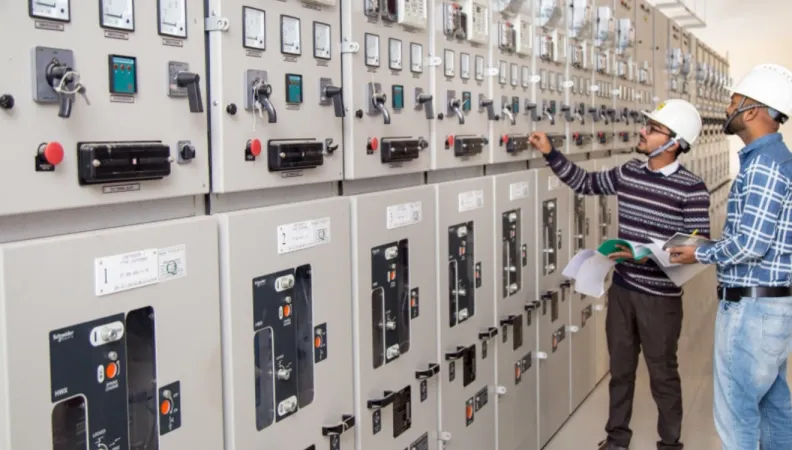Share the page
In Bangladesh, Smart Grids Provide Over a Million People With Access to Electricity
Published on

François Lhomme is an expert in intelligent electrical networks (“smart grids”) and a project team leader in the Energy Division of Agence Française de Développement (AFD). Here he describes the merits of digital technology in the energy sector. He also tells us about the ambitious project that AFD launched in Bangladesh in 2019, with the support of the European Union.
Smart grid systems help provide quality electricity for all. They facilitate the exchange of information between consumers and electricity providers and adjust the flow of electricity in real time, thereby enabling more efficient management of the electricity network.
This is the case in Bangladesh, the eighth most populous country in the world. Of its 164 million people, 116 million still live in rural areas. The country’s recent economic growth has reduced the number of people living below the poverty line in addition to creating improvements in infrastructure, as witnessed by the rise in the rate of households connected to the electricity grid - from 10% in 1994 is working towards achieving its objective of 96% connectivity by 2020.
However, Bangladesh is still one of the poorest countries in the world, and the gap in electrification between urban and rural areas remains high, while the demand for electricity keeps increasing. Beginning in the 1990s, a series of reforms led to the creation of the Dhaka Power Distribution Company (DPDC), an electricity provider operating mainly in the south of the capital Dhaka. DPDC faces the challenge of having to meet the sharply rising demand for electricity through its electrical network. In situations like these, smart grids can play a crucial role. François Lhomme tells us how.
Why is AFD involved in the smart grid sector in Bangladesh?
François Lhomme: a core aspect of Bangladesh’s economic development strategy is improved performance of the electricity sector in terms of production, transport, and distribution. Access to a reliable and sufficient supply of electricity is vital for a country that seeks to foster economic growth consistent with uniform social development while fighting against poverty. Having a secure supply of power is a step towards improving the overall living conditions of the local population.
There’s no question that any electric company must integrate digitization and digital technology into the solutions it offers in order to achieve the primary goal of providing reliable and sufficient electricity. The smart grid gives shape to this transformation, by making the grid more effective and efficient. Moreover, by integrating digital technology in our projects, we speed up the adoption of renewable energies and thus contribute towards achieving the country’s Sustainable Development Goals (SDGs).
What is particularly innovative about the digitization of the electricity grid in Bangladesh?
Today, the smart grid in Bangladesh is in its infancy and merely consists of deploying smart meters. Our project benefits from around 100 million euros in financing in addition to a further 12 million euros from the European Union. With this project, AFD is reinforcing its role as an active participant in the search for and use of advanced digital solutions in distribution stations and in medium-voltage grids.
Advanced automation will result in improved performance of the grid allowing the electricity provider to optimize energy distribution without making too heavy of an investment. The idea is to work with what the existing network, making sure to monitor if as it approaches its dynamic limits to make sure it doesn’t cause blackouts for the users. The optimization of the energy flow is thus better controlled because the grid variations are measured in real time in order to make the most of them thanks to the improved performance. It thus becomes more stable, with no interruptions, and with a greater volume of energy distributed.
What are the main difficulties in accessing energy for Dhaka residents?
In Dhaka, it isn’t the access to energy that is the problem. The issue is rather the volume and quality of available energy versus the increasing demand in an urban area whose population is expected to increase from 17 million to 20 million by 2021. This imbalance between energy supply and demand can result in power cuts, which in turn lead to polluting diesel generators being used as substitutes in neighborhoods or on industrial sites.
Why is the smart grid in particular a solution for Bangladesh?
As the smart grid improves grid performance, it will consequently eliminate the pollution caused by the diesel generators which are used as back-up during grid outages. A total of 1,141,000 people will benefit from a significant improvement in the quality of electricity service. The project also helps fight climate change by preventing an accumulated 104,000 tons of CO2 emissions per year.
Overall, and not just including the project with the DPDC, the smart grid solution is of great operational value. It makes it possible to carry out maintenance upstream of failures and to optimize the use of equipment (power transformers, circuit breakers, etc.). This is made possible by real-time algorithms that continuously analyze the hardware connected to the grid and thus extend its life. The digital presence at all levels of the network allow for better knowledge of the network and anticipation of outage-related events. The smart grid gives us a more reliable, accessible grid.
To what extent is the existing infrastructure in Bangladesh compatible with this project?
Since DPDC works according to international standards and applies state-of-the-art engineering rules, compatibility and interoperability problems should be minimal. This means that different types of equipment from different manufacturers will be able to communicate with each other and perform advanced automation functions. This is the main principle of the international standard IEC 61850. Bangladesh is no exception to this approach. Existing equipment can be integrated into innovative and digital solutions, even if it means changing a few communication units to make the whole system interoperable remotely.
What is AFD’s strategy to address some of the current challenges in the sector?
Whether in Bangladesh or in the other countries where we work, AFD’s objective is to support the energy transition, enabling it to take on a concrete form, in accordance with the Paris Agreement and the implementation of the SDGs.
Our aim is to strengthen and modernize the grids in order to optimize the existing system, allowing it to adapt to the accelerating deployment of renewable energies. AFD also supports projects working on improving access to energy, predominantly in Africa.
The use of digital technologies in electricity grids is becoming more and more pervasive. AFD is working towards integrating digital solutions in the projects it supports, regardless of the state of the grids and the demand faced by the electrical companies. The goal is to equip existing infrastructure with these new, innovative and reliable technologies in order to ensure services are prepared for the future.
